Learn how to cut an orange like a pro with this quick and easy guide! Whether you’re enjoying it as a snack, serving it in salads, or adding it on top of smoothie bowls, pick up some tips for choosing the right cutting method here.

What Are Oranges?
This may come as a surprise, but there are over 400 different varieties of oranges. From the common navel to the mandarin orange, you can easily find a flavor that suits your palate!
Typically, oranges fall into two categories — sweet or sour. Whether one or the other, all oranges are tree-borne fruits that originally come from China.
Often overlooked, oranges are not just a delicious snack. With so many ways to prepare them, they can be utilized in salads, oatmeal bowls, smoothies, juices, marmalades, and more.
How to Cut an Orange
There are so many different techniques to prepare oranges, but I’ve included some of the most versatile and useful methods in this guide. Learn how to cut oranges into wedges, supreme them, cut them in wheels, or simply peel them for a quick snack when you’re on the go.
Option 1: peeled wedges
Find an indent line on the top of the orange (it will make piercing the peel easier). Using your hands, press down until you break the peel and feel the fruit underneath. Don’t press too hard or you will break right through the flesh!
Lift up near the stem until the top peels away (see middle photo). Continue peeling the rind and pith (white part) away, then split the orange in half. Separate each orange wedge from the others and snack away!




If you own a citrus peel cutter, this can be helpful to score the orange peel and get the process started. However, most people don’t usually carry this kitchen tool around with them when they’re out and about, and using your hands is quite simple!
Option 2: Supremed
Using a sharp utility knife, trim away both ends of the orange. Stand it up on one end, then slice from top to bottom all around the orange where the rind/pith meets the flesh. Try to follow the shape of the orange to waste as little fruit as possible.

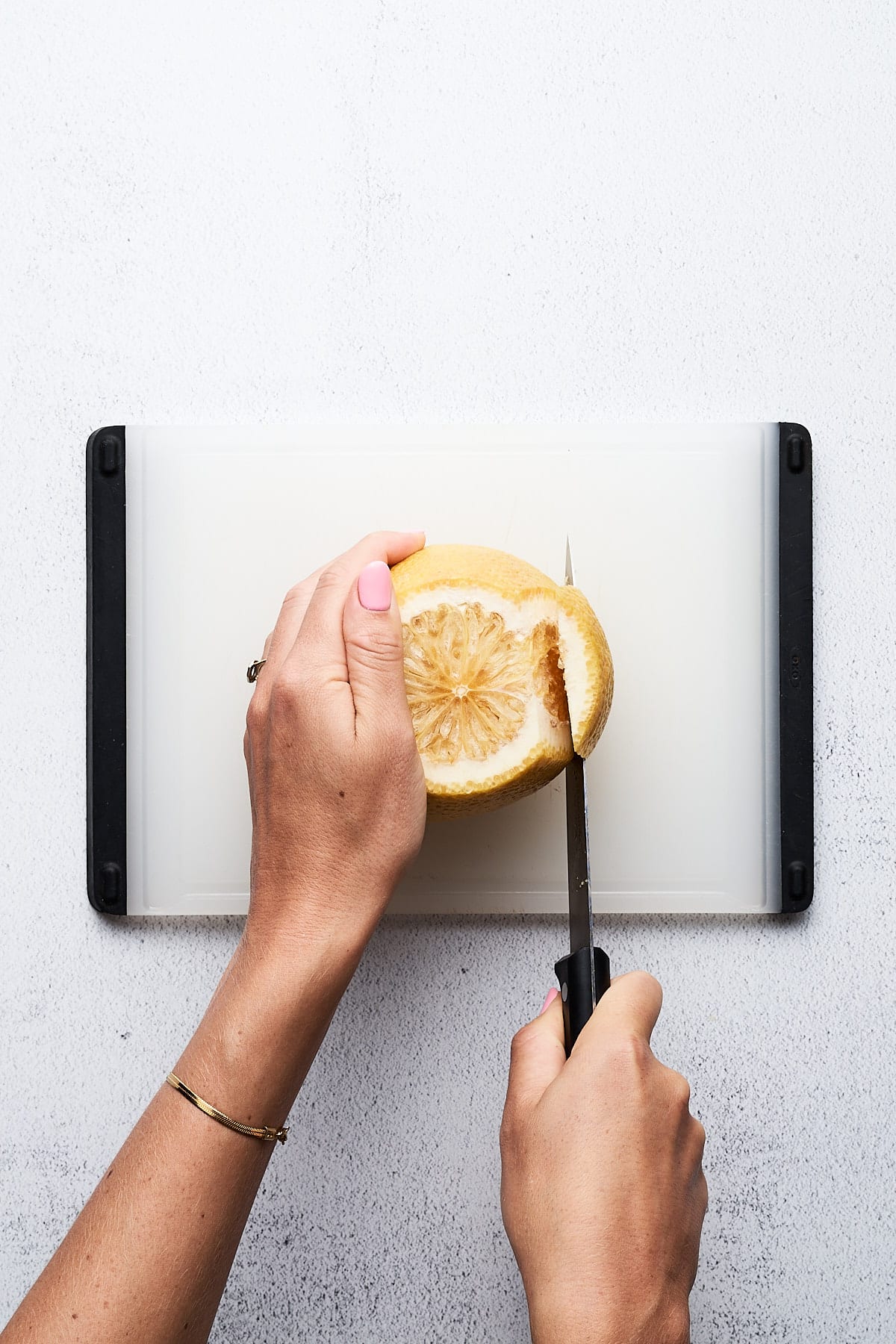
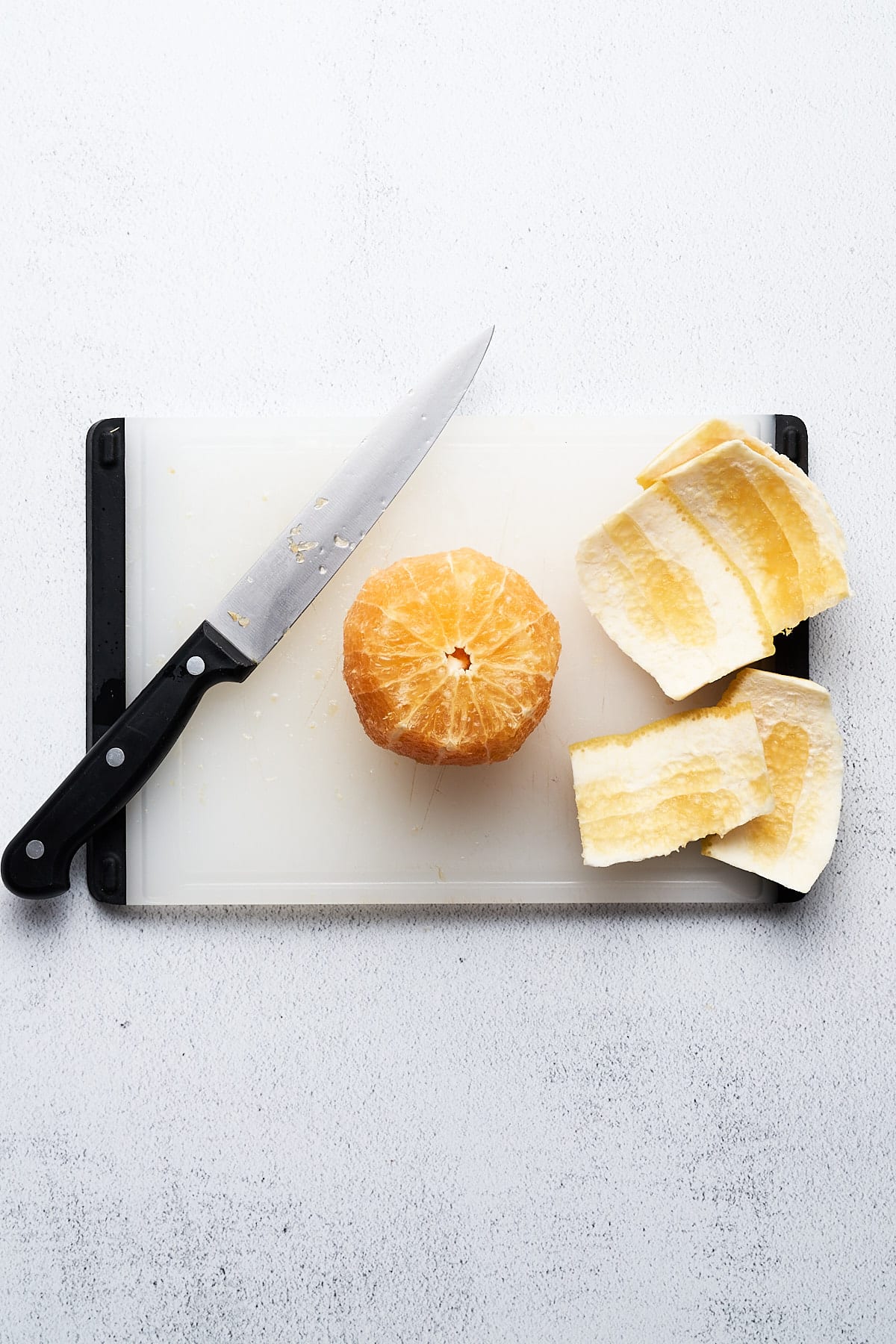
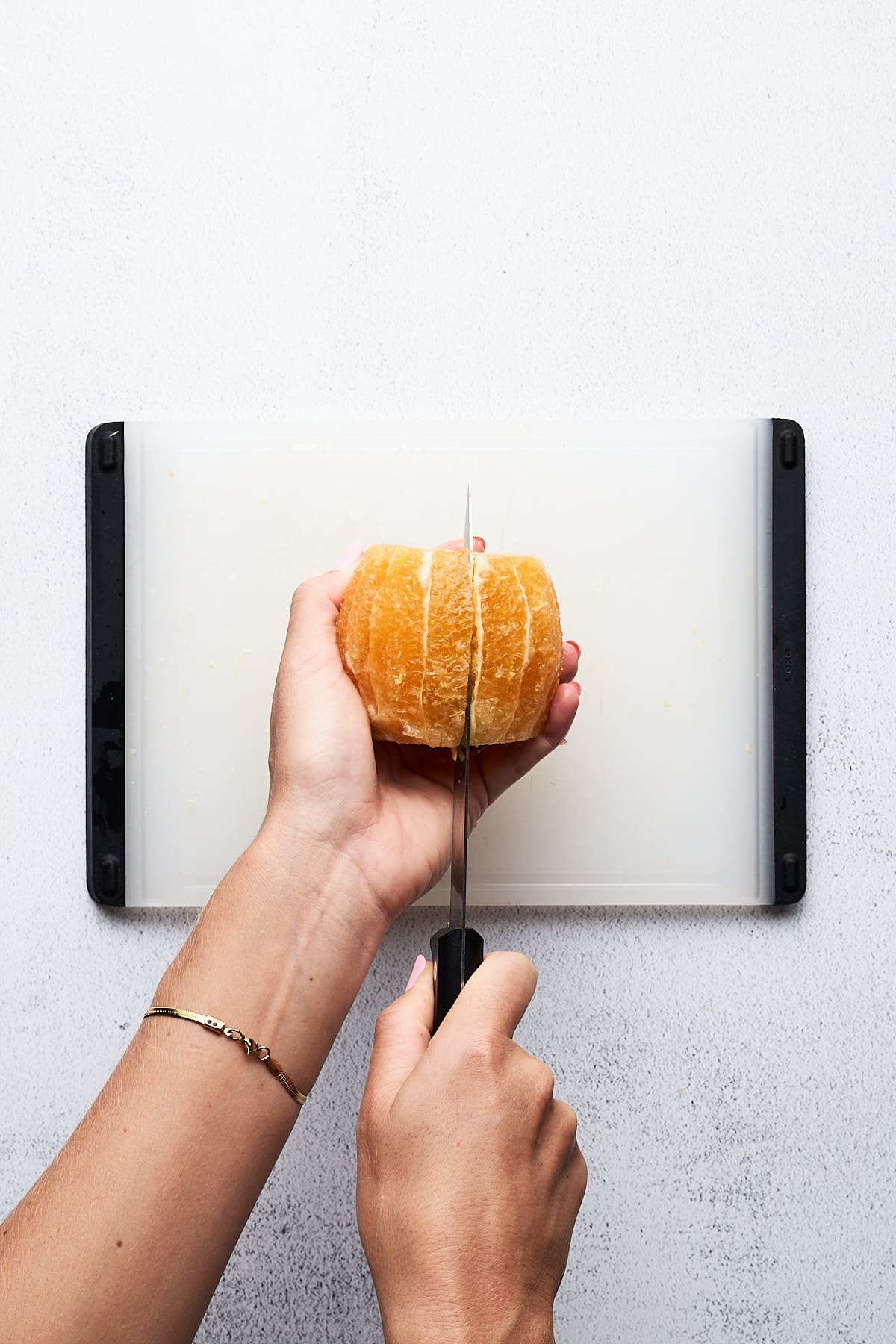
Once the majority of the peel has been cut away, go back around and slice away any small bits of pith. Hold the orange in the palm of your hand, and slice along the inside edge of each membrane to cut out orange wedges.
Option 3: Wheels
Instead of supreming the orange, you can slice it into peeled orange wheels. Turn the orange on its side, then cut slices as thickly or thinly as you’d prefer.
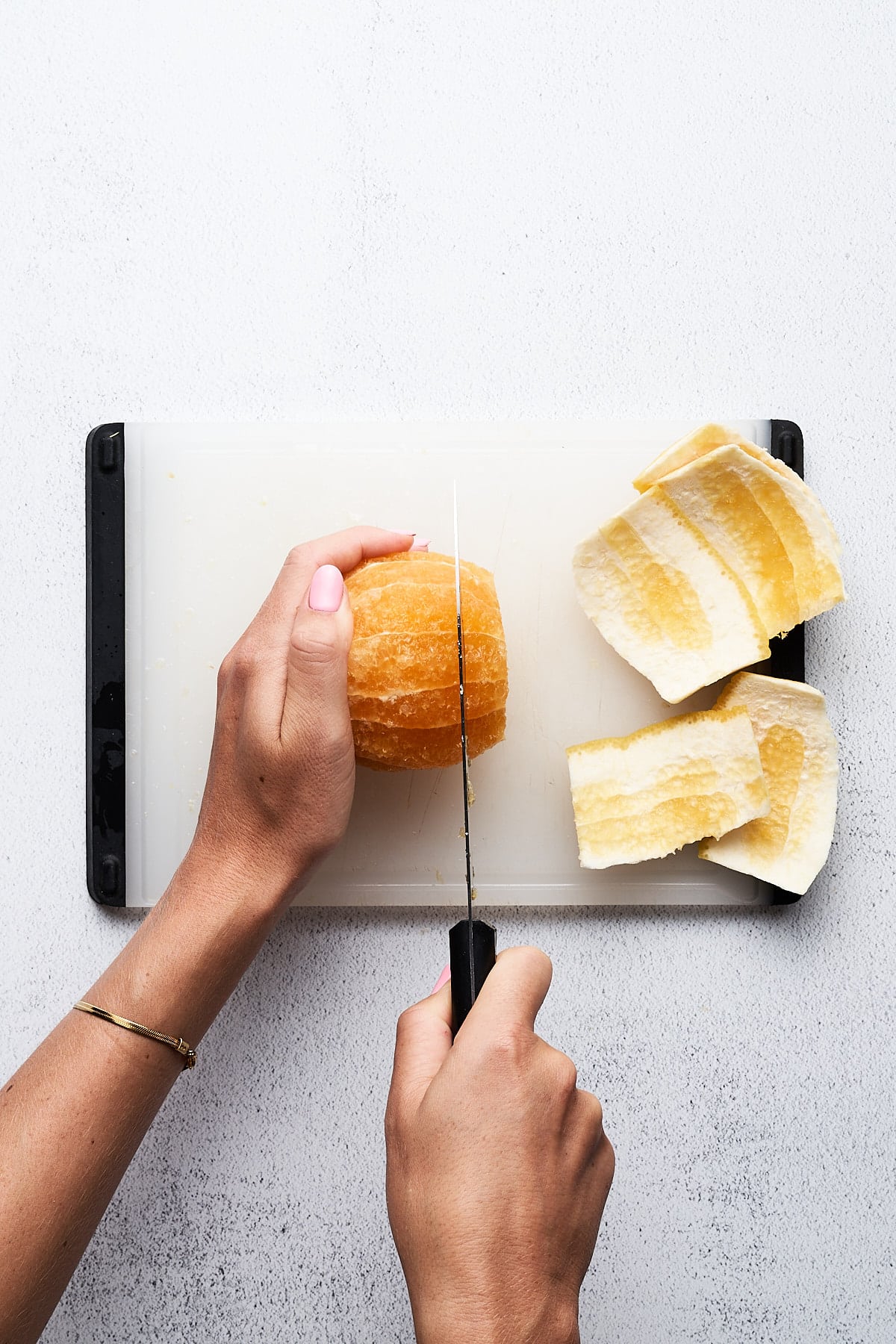

Peeled orange slices make a colorful addition to salads, cocktail garnishes, and more!
Option 4: Unpeeled orange wedges
Last, but not least, is unpeeled orange wedges. Just like supreming, trim away the top and bottom portions, then stand the orange up and slice it in half.

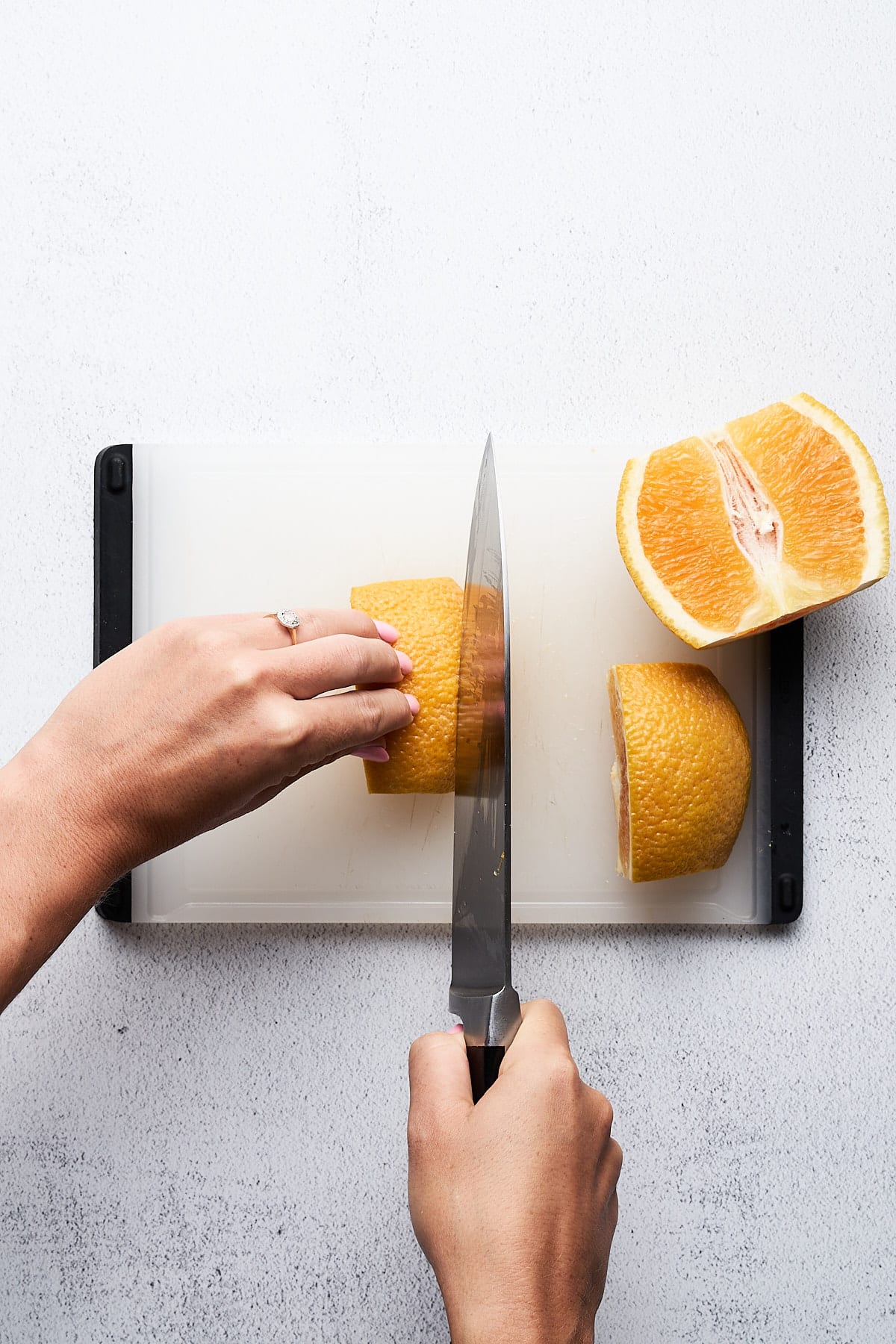

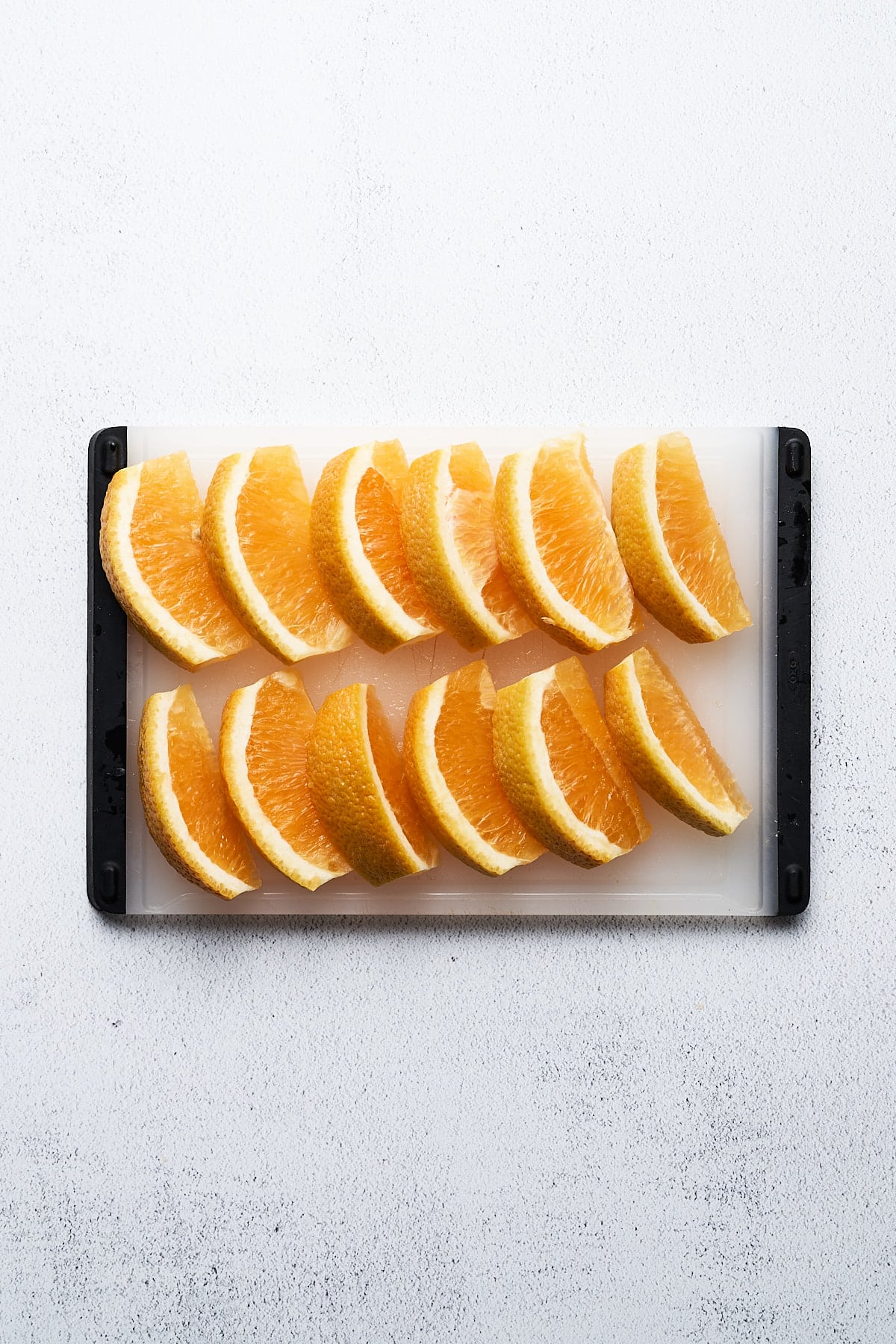
Turn each half to face down, then cut it into quarters. Cut the quarters in half again to make wedges. If there is a white membrane running along the tops of the wedges, slice this away (see top right photo).
How to Use Oranges
Now that you’ve learned how to cut oranges to suit your needs, here are a few ideas for orange-forward recipes (hungry for more? check out all of my orange recipes here):
- Campfire orange rolls
- Almond orange smoothie bowl
- Orange chia seed breakfast pudding
- Orange dreamsicle smoothie
- Carrot jello
Storing Oranges
Whether you prefer your oranges to be room temperature or chilled, follow these simple orange storage tips to keep them fresh for longer:
- Room temperature: Oranges tend to be juicier if stored on the countertop. Keep them at room temperature for about 7 days.
- Fridge: If you need more time or just enjoy them ice-cold on a hot summer day, you can store oranges in the fridge for up to 3 weeks. Just be sure to keep them in the produce drawer.
- Freezer: When freezing oranges, it’s best to remove as much of the pith as you can, quarter them, and store them in a freezer-safe bag or container for up to 6 months.
- Cut slices: If you’ve already cut up your oranges, keep them in the fridge in an airtight container for up to 2 days.
How to Pick Perfect Oranges
Oranges are a fairly forgiving fruit in comparison to other fruits, but here are some tips to pick the best ones when you’re at the store:
- Weight: Pick an orange up to check how heavy it feels. If it has a good weight to it, this means it will be juicy!
- Peel: The peel should be a uniform orange color with no soft spots, dark marks, or mold visible. The peel shouldn’t feel too spongy either.

Nutritional Benefits Of Oranges
Not only are oranges refreshing and delicious, but they’re also filled with many different health benefits. Here’s what you can expect in just one medium-sized orange:
Water-Rich
Oranges contain about 3 ounces of water, making them a great snack. Water-rich foods help keep us full longer between meals, along with contributing to overall daily water requirements.
3 Grams of Fiber
Medium oranges contain approximately 3 grams of fiber, which is about 11-12% of your daily target. Fiber helps aid in digestion as well as blood sugar regulation.
130% Daily Value of Vitamin C
One of the richest sources of vitamin C, oranges are a powerhouse in this department! If you didn’t already know, vitamin C helps reduce inflammation and produce more collagen.
Potassium & Folate
Two more nutrients found in oranges are potassium and folate. Potassium is needed to help the heart function optimally, and folate supports the brain and nervous system.
Orange FAQs
Yes, orange peels are edible. It’s best to eat smaller amounts since they can be bitter. A few ways to use the peels include candied orange peels, preserving them, baking them in muffins, or infusing teas with them.
If your oranges are hard to peel, they may be slightly underripe. When they’re underripe, oranges have slightly thicker skin, making them more challenging to dig into. But don’t worry, they’ll still taste great (just a little more tart).
The easiest way to peel an orange depends on what tools you have. It’s very easy to peel an orange with your hands, but for the least pith, it’s best to supreme them.
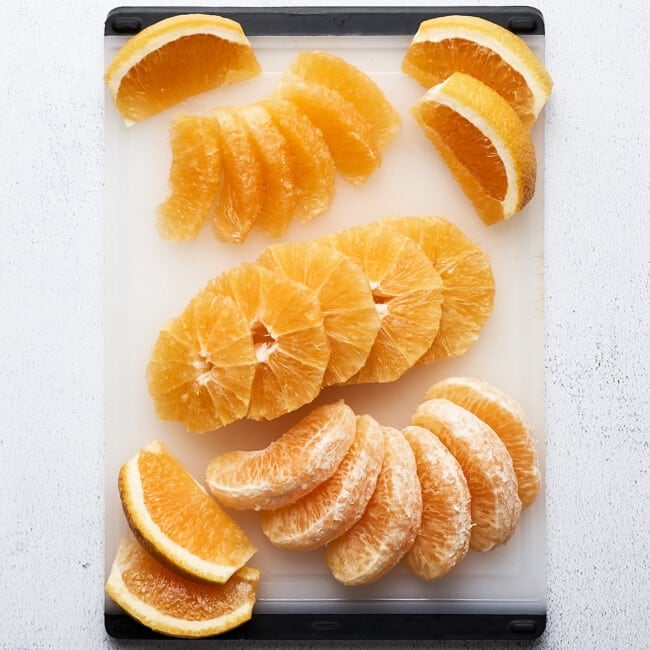
Ingredients
- 1 orange
Instructions
Peeled Wedges
- Find an indent line on the top of the orange. Using your hands, press down until you break the peel and feel the fruit underneath. Lift up near the stem until the top peels away. Continue peeling the rind and pith (white part) away, then split the orange in half. Separate each orange wedge from the others.
Supremed
- Peel: Using a sharp knife, trim away both ends of the orange. Stand it up on one end, then slice from top to bottom all around the orange where the rind/pith meets the flesh. Try to follow the shape of the orange to waste as little fruit as possible.
- Slice Wedges: Slice away any small bits of pith. Hold the orange in the palm of your hand, and slice along the inside edge of each membrane to cut out orange wedges.
Wheels
- Peel: Using a sharp knife, trim away both ends of the orange. Stand it up on one end, then slice from top to bottom all around the orange where the rind/pith meets the flesh. Try to follow the shape of the orange to waste as little fruit as possible.
- Slice Wheels: Turn the orange on its side, then cut slices as thickly or thinly as you’d prefer.
Unpeeled Orange Wedges
- Just like supreming, trim away the top and bottom portions, then stand the orange up and slice it in half.
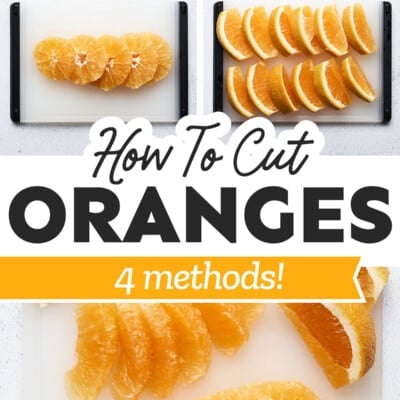
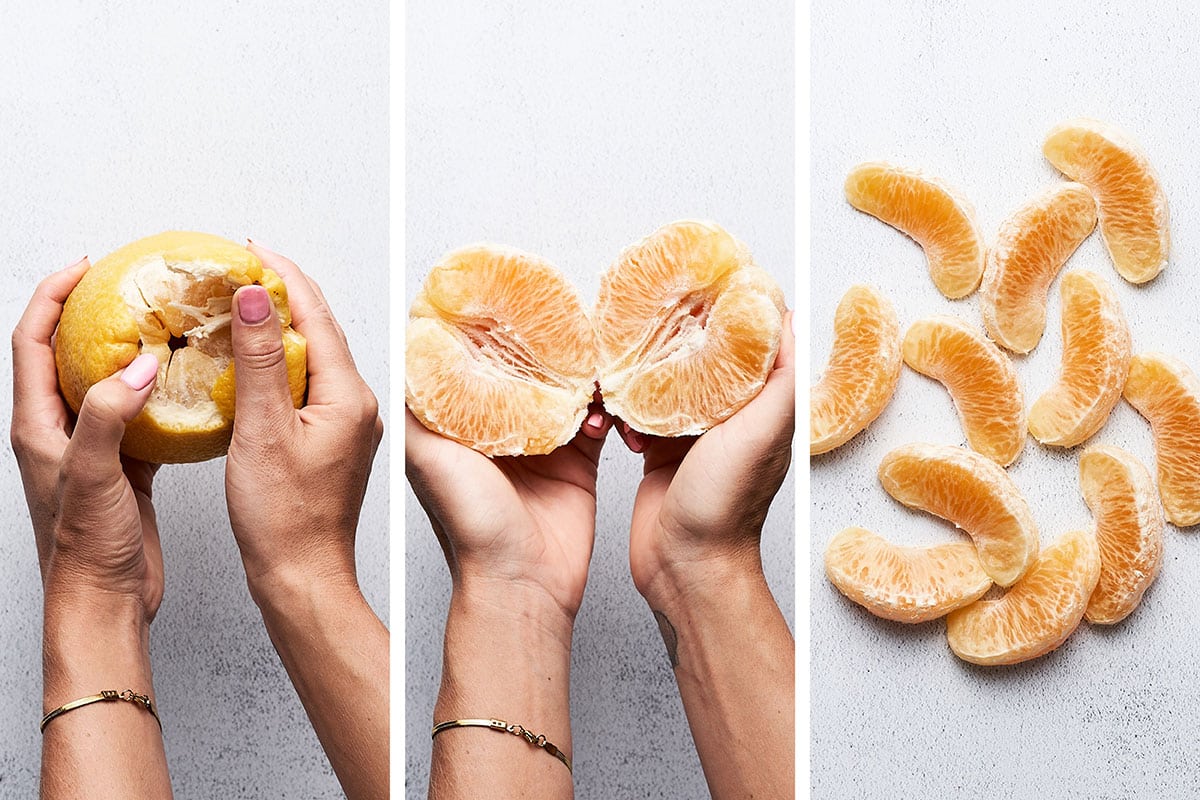
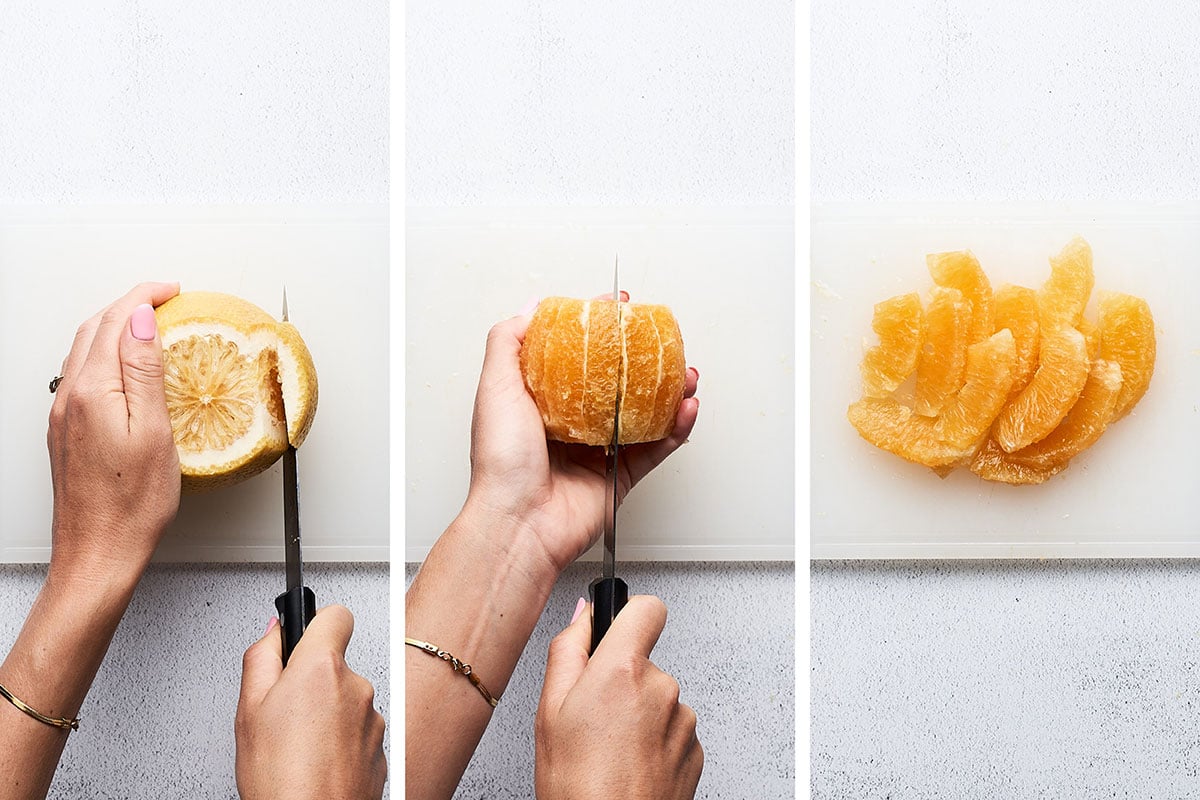
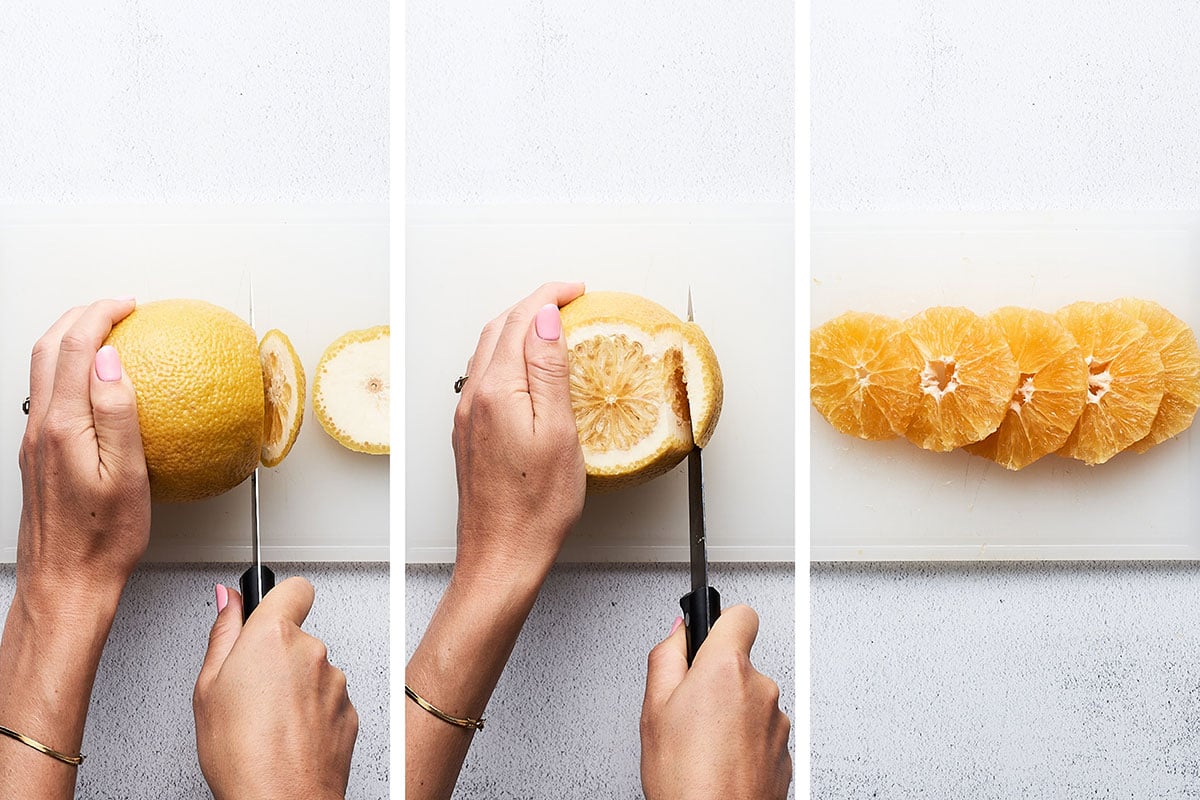
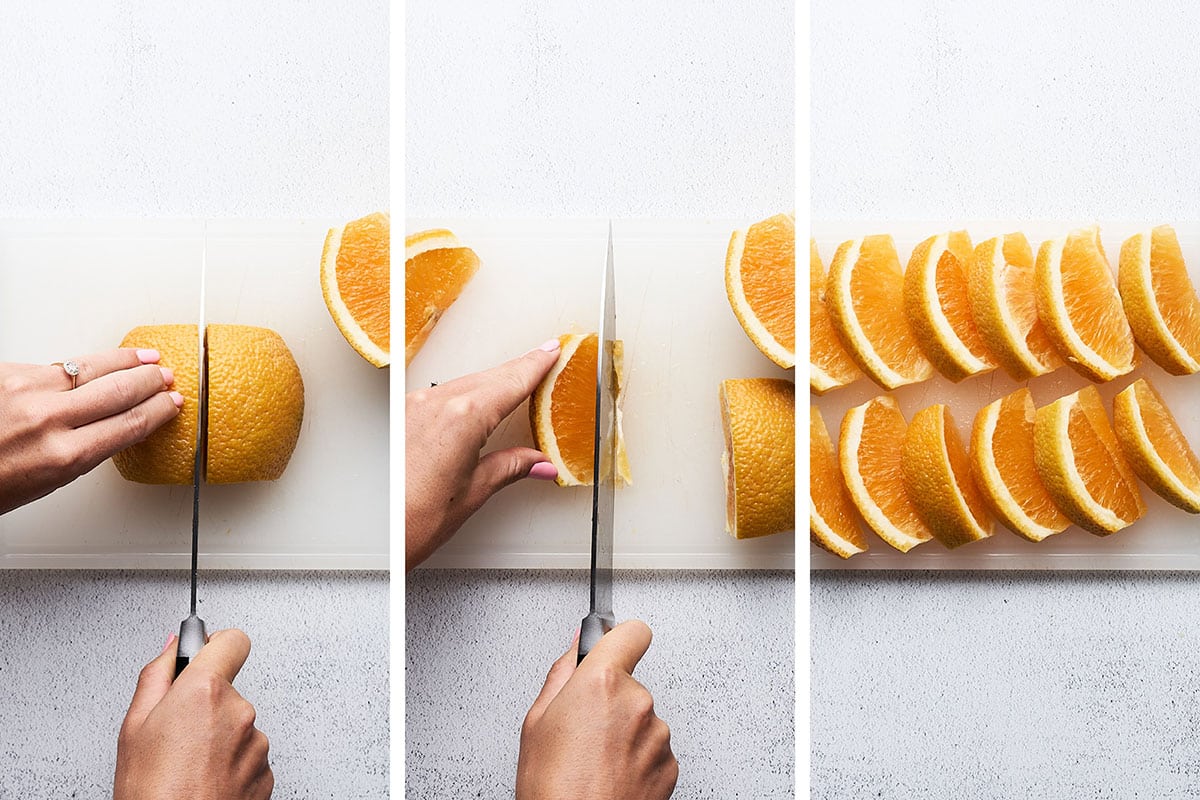




Leave a Comment